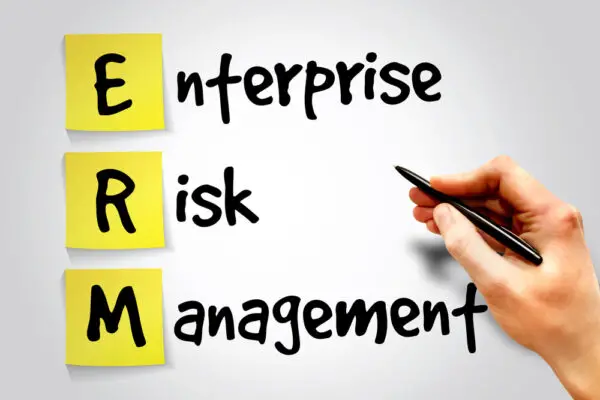Benefit and Risk Management Services (BRMS) are a specialized form of risk management services that focus on the management of benefits and risks associated with an organization’s operations.
This type of risk management is designed to help organizations identify, quantify, manage, and mitigate their operational risks. In today’s complex business environment, BRMS can be invaluable in helping companies protect their investments and maximize their return on investment.
The BRMS services offered today are revolutionizing the way businesses manage their risk. From employee safety to financial management, there’s a whole new realm of possibilities for business owners who take advantage of these innovative solutions.
With technology continuing to evolve rapidly, it can be overwhelming to understand the benefit risk management services of implementing digital risk management systems. Project manager tools provide service for various projects.
This blog post breaks down everything you need to know about benefit and risk management services so that you can make an informed decision on this option of taking your business operations up a notch.
Let’s take a closer look at what these services entail.
Types of BRMS Services
The type of service provided by BRMS depends upon the organization’s needs and objectives. These firms offer four main types of services: consulting, training, implementation, and monitoring.
Consulting services typically involve analyzing the organization’s current benefit structure to determine potential areas for improvement or cost savings. Family member can be clients in person for reviews and industry payment of claims.
Training focuses on providing employees with the knowledge and skills needed to use BRMS systems effectively. Implementation involves setting up the system so that it works for the organization’s specific needs.
BRMS insurance reviews offer invaluable insights into the quality and reliability of the company’s policies, enabling potential clients to make informed decisions. By examining the experiences and feedback of existing customers, these reviews shed light on the company’s responsiveness, coverage options, and customer support.
As a result, interested parties can better assess whether the insurance provider aligns with their unique needs and preferences. In summary, BRMS insurance reviews act as a vital resource for those seeking to safeguard their assets and gain peace of mind in the face of uncertainty.
Finally, monitoring involves tracking performance metrics to ensure the system works as intended.
Benefits of Using BRMS
Leveraging a quality benefit and risk management system can be a huge advantage for any business looking to remain competitive in today’s market.
By properly managing your benefits and risks associated with your operations, you can increase efficiency while reducing costs associated with compliance issues or unexpected losses due to unanticipated events such as natural disasters or data breaches.
Additionally, using a BRMS system enables organizations to keep up to date with changing regulations more easily than trying to do so manually – this can save time and money in the long run and reduce any potential liabilities associated with non-compliance issues.
Benefit and Risk Management Services Reviews
Matthew Schafer. 11. Rating. Current employees, under one-year Recommendations. Positive Expectations. Approved by CEO Pros. The office environment was positive. People work in harmony and can assist with their daily work.
Each team includes strong leaders that are actively engaged with employees who support them. Cons: An environment where constant change is a common characteristic of the industries.
I’m sure the support offered by advice to management has an influence on the daily workload, but I believe that we can keep doing everything that has already been done! See check the website for entire review.

Risks of Using BRMS
While there are numerous advantages associated with using a quality BRMS system, there are also some risks involved that should not be overlooked either.
For example, if an organization fails to implement its new system properly or doesn’t adequately train its staff on how to use it correctly, then they may end up spending more money than anticipated in order to get it running smoothly again
this could lead to significant financial losses for the company depending on its size and budget constraints. Additionally, if an organization isn’t careful about who they choose for vendors when implementing their new system,
Then they could also run into security issues that could compromise confidential data or customer information – this could also have serious legal ramifications for them, as certain laws require businesses to take reasonable steps towards protecting customer data from malicious actors online.
Conclusion
In conclusion, utilizing a Benefit & Risk Management System (BRMS) for healthcare, other benefit and risk management services can provide numerous advantages for businesses looking to remain competitive in today’s market but there are also some risks involved that shouldn’t be overlooked either – proper training & implementation is essential in order for organizations.
To reap all of the benefits without experiencing unexpected losses due to inadequate setup or security issues related to vendor negligence/carelessness when selecting third-party vendors outside their control/knowledge base.
Ultimately, it all comes down to understanding your organizational needs & objectives before moving forward with any major changes, such as implementing such a platform – only then will you be poised for success!

Chris Ekai is a Risk Management expert with over 10 years of experience in the field. He has a Master’s(MSc) degree in Risk Management from University of Portsmouth and is a CPA and Finance professional. He currently works as a Content Manager at Risk Publishing, writing about Enterprise Risk Management, Business Continuity Management and Project Management.



